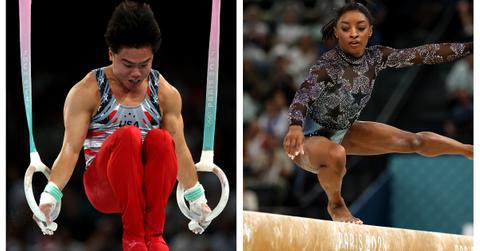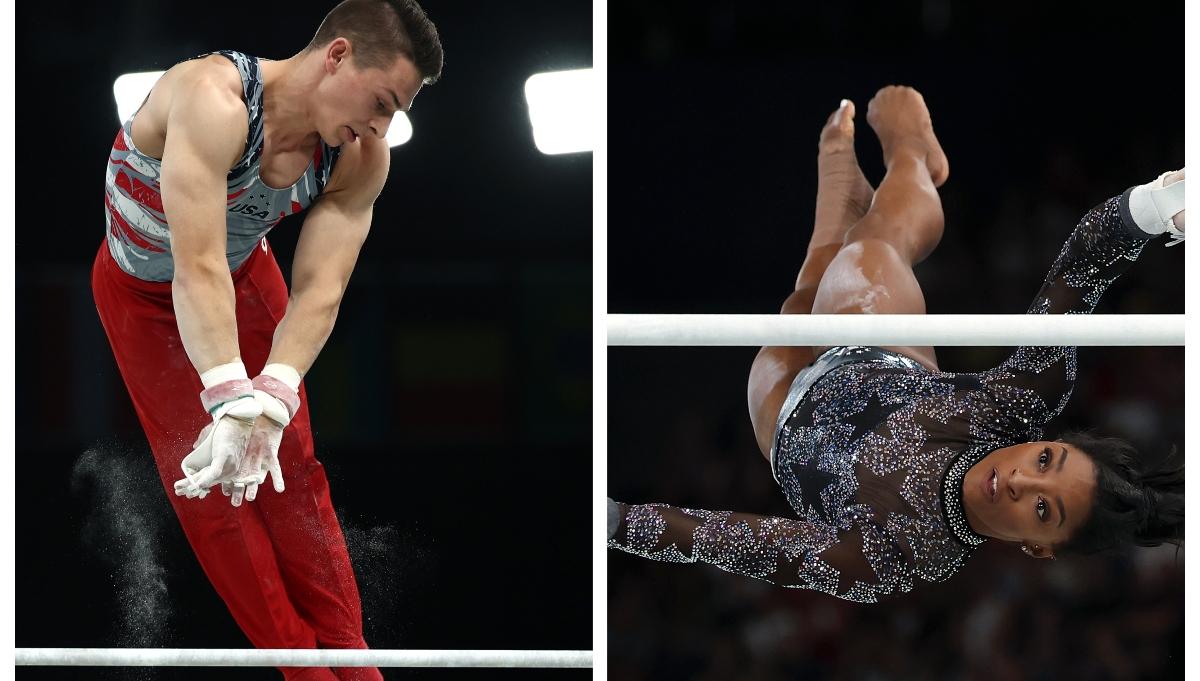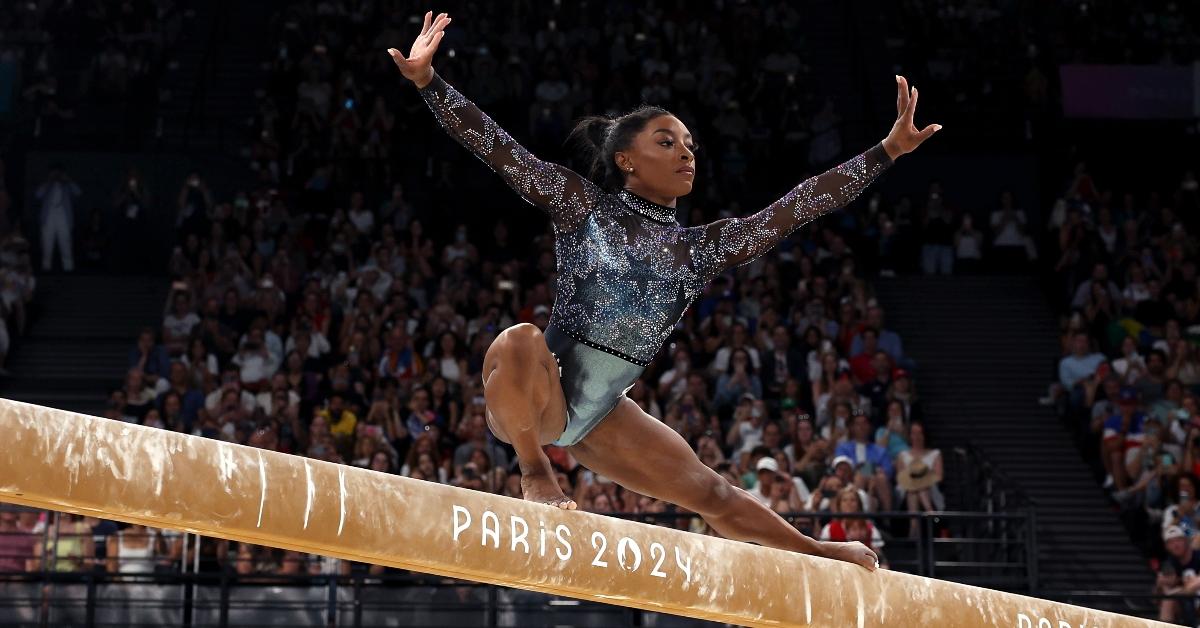A Quick Guide to the Differences Between Men and Women's Gymnastics — and How They Came to Be
In the early days of gymnastics, men and women used the same equipment.
Published July 30 2024, 2:11 p.m. ET

Asher Hong and Simone Biles at the 2024 Summer Olympic Games in Paris
When it comes to the world of artistic gymnastics, it can sometimes seem like the men's and women's routines are actually worlds apart. From different apparatuses and rules to often different kinds of uniforms, it can make any casual viewer wonder why the same sport can have so many discrepancies.
Below, we give a quick overview of the differences between men and women's competitive artistic gymnastics, and why these differences came to be.

Paul Juda and Simone Biles at the 2024 Summer Olympic Games in Paris
What are the differences between men's and women's gymnastics?
Women's gymnastics typically includes four events: floor, vault, uneven bars, and balance beam.
Meanwhile, for men, there are usually six events: floor, vault, rings, pommel horse, parallel bars, and horizontal bar.
The two events that the men in women have in common are the vault and floor.
But the rules behind their requirements and scoring are different. Not only that, but women's floor routines tend to include dance moves (often to music) in order to showcase their artistry, while men's floor routines are typically about showcasing strength. On the vault, men usually have their tables at a higher height as well.

Stephen Nedoroscik of Team USA competes on the pommel horse during the Artistic Gymnastics Men's Qualification on Day 1 of the Olympic Games Paris 2024 at Bercy Arena on July 27, 2024.
Why are men's and women's gymnastics different?
It wasn't always this way. In the early days of gymnastics, men and women actually started out practicing on the same equipment.
"As late as the interwar era, women practiced parallel bars, rings, horizontal bar, and pommel horse — these apparatus were especially popular in communist countries," Georgia Cervin, former gymnast turned author, told the Federation Internationale de Gymnastique (FIG).
So why did this change? Why was one of the bars raised for women in order to make the uneven parallel bars, and why did the balance beam become its own apparatus for women? Cervin says it's probably due to gender stereotypes, along with the choice to separate men and women in the sport.

Simone Biles of Team USA competes on the balance beam during the Artistic Gymnastics Women's Qualification on Day 2 of the Olympic Games Paris 2024 at Bercy Arena on July 28, 2024.
"Secondary sources suggest that both of these apparatuses promoted a style of movement where women 'posed' on the apparatus, to be observed in their grace and beauty," Cervin explained.
"Perhaps most importantly, in the Olympic context there has been a great reluctance to allow men and women to compete on the same terms," Cervin also noted. "In this context, it makes sense that the apparatus were different or adapted for women. On the one hand, it reflects a perception that women are smaller and weaker and thus need different or modified apparatus to work on. And on the other hand, it avoids any invitation of direct comparison between the performances of men and women."
Cervin also said that the International Olympic Committee was more willing to accept women's gymnastics precisely because of these more feminine aspects (grace, passivity, etc.), which was considered more "appropriate" for women. Therefore, the FIG "promoted apparatuses and performances that demonstrated the feminine character of the sport."